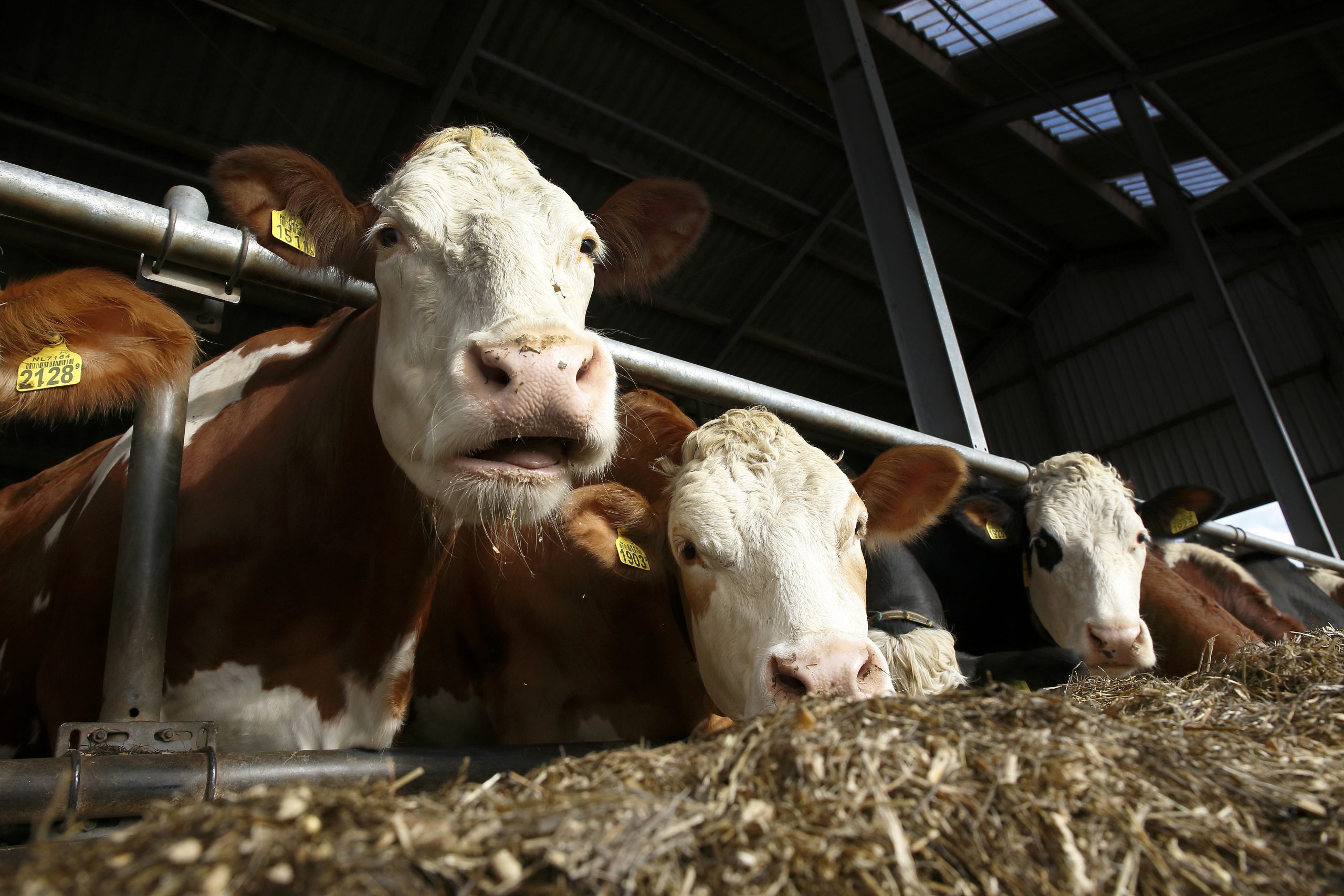Feeding cows shredded and treated newspapers

Feeding newspaper to a cow doesn’t sound logical. Nevertheless, feeding paper as a roughage substitute was not that unusual a few decades ago. But could it still be an option?
Newsprints are originally made from wooden materials which undergo a delignification process using chemical substances. These materials will, therefore, have chemical and physical characteristics similar to those of the chemically-treated roughages such as straws and other bulky feeds.
The newsprints, however, may not be used as sole roughage in the diet, as may be the case with other conventional roughages. This is due to the presence of ink materials comprising of lead, carbon black, oils, etc. Such materials adversely affect palatability of the ration when large amounts of newsprints are incorporated into it. Digestive and metabolic problems may also arise from feeding of large amounts of newsprints in the ration. This is due to the effects of the ink contained in such materials on microbial population in the rumen, and on the motility of the gastrointestinal tract of the animal. For these reasons, the newsprints should either be fed in restricted amounts, or be further treated chemically for removal of the ink before being fed as sole roughage in the diet. Also additives or other ingredients should be added to make it palatable and digestible, such as molasses, urea (which provides the rumen micro-organisms with the nitrogen needed for production of amino acid) and phosphorus compounds (to help production of ATP and nucleic acids).
Newsprints in beef cattle feeding
To study the zootechnical effects of this unconventional feed ingredient, a study was conducted to compare feed intake, digestibility, and performance of beef cattle fed diets containing 8%, 16%, or 24% newsprints.
Molasses was added to the diet in amounts corresponding to those of the newsprints in order to overcome the palatability problem. The other ingredients were also adjusted to maintain similar protein and energy densities among the rations (Table 1).
Feed intake values were linearly reduced as the amount of the newsprints increased. Thus, the intake values (estimated as percentages of bodyweight) were 2.53%, 2.14%, and 1.65% with diets containing 8%, 16%, and 24%, respectively compared with an average intake of 2.73% with the control diet having conventional roughage.
As indicated earlier, the reduced feed intake with elevated levels of newsprints in the diet may be a direct result of the reduced palatability. In the above mentioned study, however, molasses was also added in elevated amounts suggesting that palatability has not been a major factor reducing intake. The reduced intake here was probably related to the effect of the large amounts of the newsprints on the water retention in the rumen. Consequently, the rumen will be distended with water, with a little space available to accommodate extra amounts of feed.
Affecting fibre digestion
Digestibility of the ration has also been reduced with the elevated levels of the newsprints, which could be attributed to the effects of the elevated levels of newsprints on the number of rumen protozoa and on the VFA concentration, both of which are important factors affecting fibre digestion and hence digestibility of the ration dry matter. This is particularly true when considering that the protozoa digest 55-60% of the cellulose fraction of feed, and that there is a direct relationship between the number of protozoa and the amount of the algae in the rumen, which also play a role in digestion. As a result of the reduced intake and digestibility of the ration containing large amounts of newsprints, there was a decreased weight gain of the experimental cattle, and the efficiency of feed conversion was also reduced, particularly with levels of the newsprints exceeding 8% of the total ration (Table 2).
Effect on dairy cows
Studies have also been conducted to determine the maximum amount of newsprints that could safely be incorporated into dairy cattle diets without having adverse effects on feed intake, digestibility, or milk production. In these studies, Friesian dairy cows were fed over a 40-day period on rations containing different levels of newsprints. Feed intake was reduced as the level of newsprints was increased in the diet, suggesting that changes in the digestive kinetics similar to those observed with beef cattle have also occurred in this case and, hence, contributed to the low intake. Digestibility values however, have not been influenced by the level of the newsprints in the diet. Table 3 shows the production responses to feeding of different levels of newsprints to dairy cows. The actual milk yield decreased with the larger amounts of newsprints incorporated into the ration.
However, considering the greater amounts of milk fat produced in these cases, the fat-corrected milk values (FCM) were greater for the high-newsprint rations. This is probably due to the high fiber content of the newsprints (about 15%) which is needed by the cow to maintain high levels of FCM.
Conclusions
Newsprints could be used as a roughage substitute for all classes of ruminant animals, and would have a nutritive value equating that of the chemically-treated roughages. Secondly, the maximum tolerable levels of the newsprints are 8% and 20%of the total ration for beef cattle and dairy cows.











